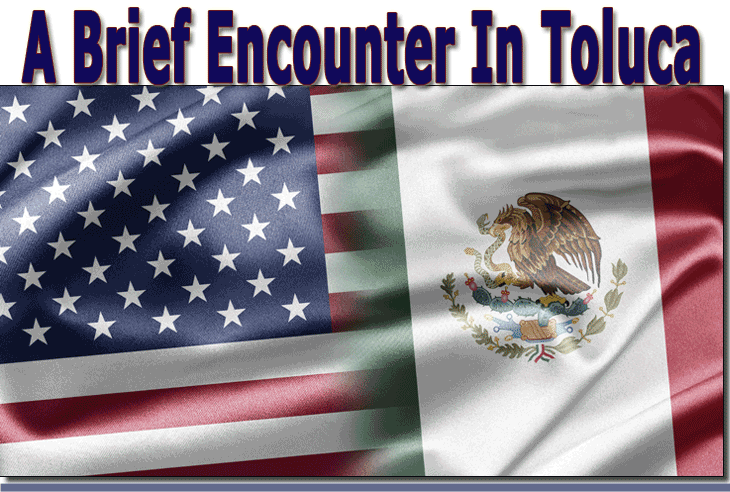

#INTHEAIREVERYWHERE

 |
 #INTHEAIREVERYWHERE |
 |
| Vol. 14 No. 31 | Monday
April 13, 2015 |
| A Brief Encounter
In Toluca
|
 A big aviation delegation from St. Louis, Missouri, met in Toluca, Mexico, last week and vowed to create a cargo pact between two airports. St. Louis Mayor Francis Slay and Lambert Airport Director Rhonda Hamm-Niebruegge met with Governor of the State of Mexico Eruviel Ávila to announce an official partnership towards developing air cargo “with St. Louis as a key hub for Mexico’s International Exports and Imports,” the official press release stated. The presser continues: “The partnership would involve Toluca International Airport (TIA), which serves the largest industrial region in the country of Mexico. “Lambert-St. Louis International Airport (STL) is the 31st busiest airport in the U.S. as ranked by Airports Council International-North America.” Fairly impressive stuff . . . until we looked deeper. Substantial parts of the Mexican airport system have been privatized, resulting in an occasionally maddening diversity of statistics reporting quality. Unfortunately, Toluca doesn't report annual cargo tonnage to Airports Council International, nor are those numbers available on the airport's website. While we cannot determine how many tons the gateway moved in, say, 2013, one might reasonably assume that Toluca tonnage is less than any of Mexico's golden triangle of airports serving Mexico City, Guadalajara, and Monterrey (MTY). For example, Mexico's number three cargo airport, MTY, moved 46,000 tons of air cargo in 2013. Also, the claim that STL was “the #31 busiest airport” in the U.S. during 2014 should be considered carefully. One can only imagine that ranking applies to passengers, although there is an unusual emphasis (here) for an air cargo effort. In fact, by 2013, STL air cargo tonnage had nearly fallen out of the top 50 U.S. airports, positioning STL just below the airport in Omaha, Nebraska, and just ahead of Des Moines, Iowa. While ACI hadn’t released at press time its top 50 for 2014, STL’s own website reported the airport’s year-on-year tonnage for 2014 had fallen almost 9 percent from the previous year. It’s hard to imagine that STL moving up around 20 slots to number 31 in one year on the basis of a roughly 9 percent decrease, but it’s even more difficult to understand why a presser might wish to ignore that kind of cargo performance—even when the subject ostensibly is air cargo. If all this sounds a bit familiar, we just need look back a couple years ago at a thwarted attempt to divert millions of state taxpayer dollars from social programs to the pockets of a well-connected real estate developer and political cronies in pursuit of an Aerotropolis scheme for Lambert St. Louis International Airport. Among the lowlights of that effort was a memorandum of agreement signed with a rebranded company that somehow named itself Pan American Clipper Cargo, based in Brownsville, TX, just before that company's CEO, Robert Hedrick, was charged with child pornography. Fast-forward to today and this current attempt to build business for aviation in St. Louis seems to avoid some missteps of the previous effort. Hundreds of millions of public money have not been suggested, nor construction of tens of millions of square feet of warehouse “on spec.” In the chronically misguided Aerotropolis scheme, perhaps the only beam of wisdom was the team’s recognition that the integrators would be of no help to non-hub STL’s efforts. Yet this time the airport operator and politicos have chosen a second-tier Mexican airport anchored by FedEx. It is reasonable to assume FedEx is not about to fly north, bypassing its own hubs. As Toluca accounts (we can only guess) for less than 50,000 annual tons and FedEx is certainly a significant share of that tonnage, one reasonably wonders what potential upside sparks enthusiasm for this partnership? Geoffrey |
If
You Missed Any Of The Previous 3 Issues Of FlyingTypers |